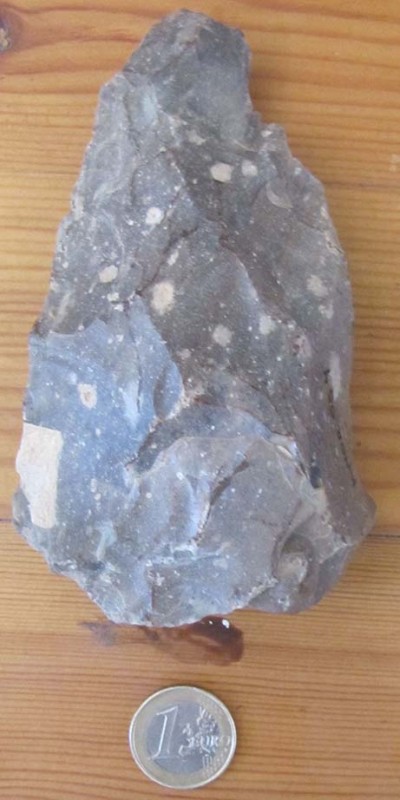 |
| Figure 2. Side A of the Kholetria-Ortos biface (photograph by T. Strasser). |
... New evidence from Cyprus is a hand axe (biface) from the site of Kholetria-Ortos. The Canadian Palaipaphos Survey Project discovered the site in 1983 (Fox 1987: 19) and, subsequently, S. Swiny, then director of the Cyprus-American Archaeological Research Institute (CAARI), collected the hand axe in 1992 from the surface near the site. In the CAARI catalogue, the artefact is described as being of ‘Palaeolithic hand axe type’ (Figure 1). Our description is based on the first-hand inspection and examination of a three-dimensional printed replica, which is in turn based on photorealistic three-dimensional digital images by Brandon Olson (see Olson et al. 2014). The hand axe is made of Lefkara chert, a commonly exploited lithic resource on Cyprus. It is an amygdaloid, or sub-triangular, hand axe with a converging tip. It is 140mm in length, 85mm in width and 55mm in thickness (Figures 2–4). The dihedral butt and sinuous edges are typical of Acheulean bifaces in south-west Asia (e.g. Shea 2013: 70–79), as is the deep, invasive flaking covering both faces. The piece has a thick patina, clearly visible where recent accidental flakes cut through it, suggesting a [...] Antiquity Journal







No hay comentarios:
Publicar un comentario